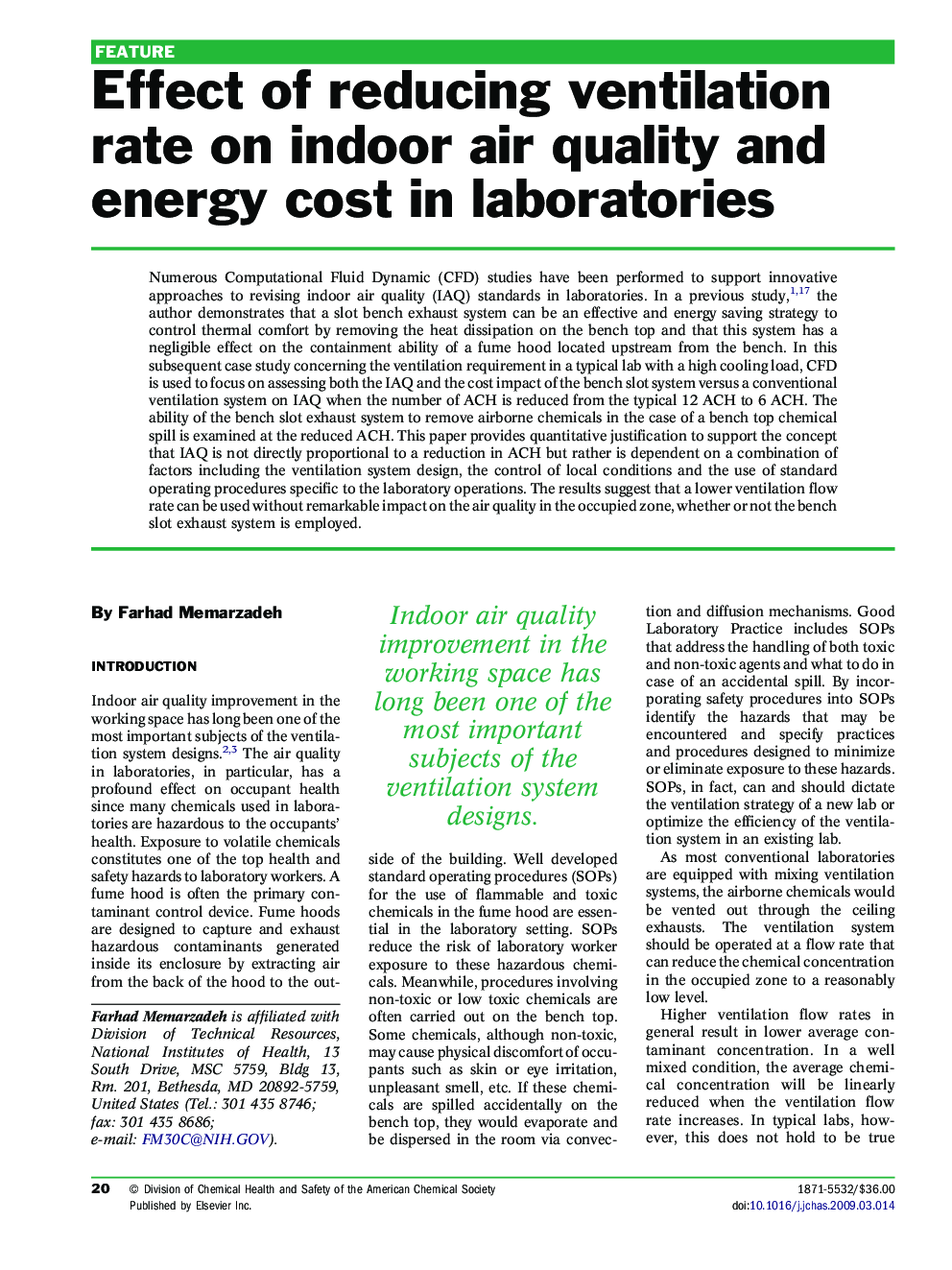| Article ID | Journal | Published Year | Pages | File Type |
|---|---|---|---|---|
| 574479 | Journal of Chemical Health and Safety | 2009 | 7 Pages |
Numerous Computational Fluid Dynamic (CFD) studies have been performed to support innovative approaches to revising indoor air quality (IAQ) standards in laboratories. In a previous study,1 and 17 the author demonstrates that a slot bench exhaust system can be an effective and energy saving strategy to control thermal comfort by removing the heat dissipation on the bench top and that this system has a negligible effect on the containment ability of a fume hood located upstream from the bench. In this subsequent case study concerning the ventilation requirement in a typical lab with a high cooling load, CFD is used to focus on assessing both the IAQ and the cost impact of the bench slot system versus a conventional ventilation system on IAQ when the number of ACH is reduced from the typical 12 ACH to 6 ACH. The ability of the bench slot exhaust system to remove airborne chemicals in the case of a bench top chemical spill is examined at the reduced ACH. This paper provides quantitative justification to support the concept that IAQ is not directly proportional to a reduction in ACH but rather is dependent on a combination of factors including the ventilation system design, the control of local conditions and the use of standard operating procedures specific to the laboratory operations. The results suggest that a lower ventilation flow rate can be used without remarkable impact on the air quality in the occupied zone, whether or not the bench slot exhaust system is employed.
